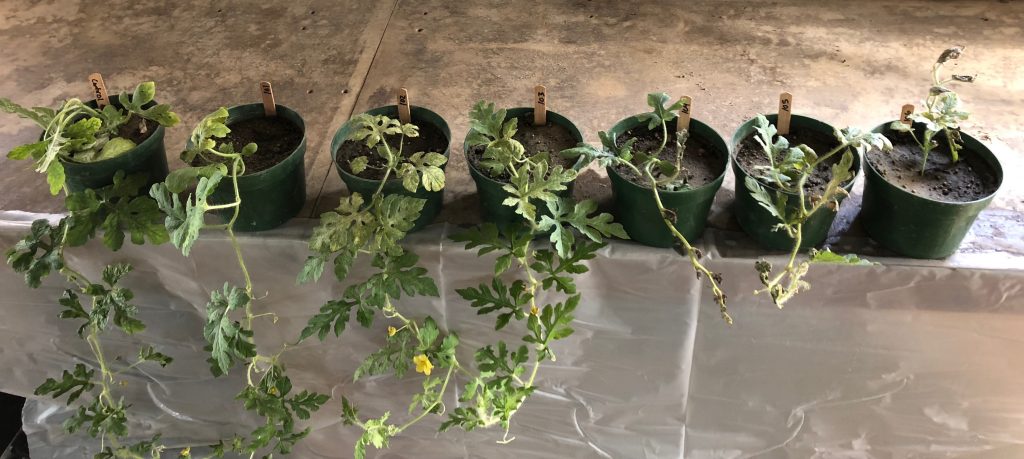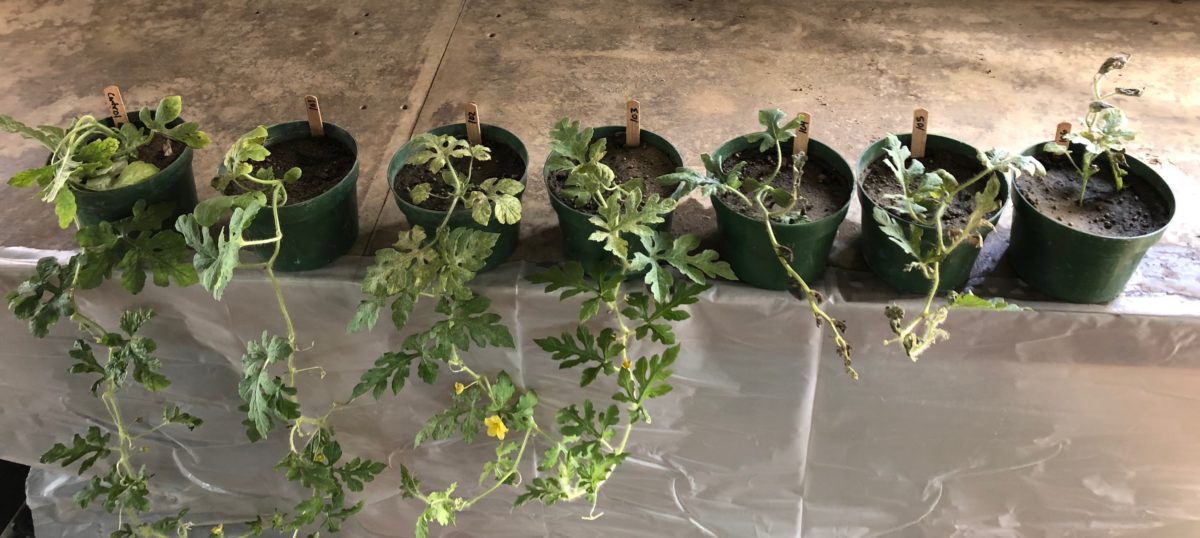
Root-knot nematodes are many crops’ worst enemy, including watermelon. Abolfazl Hajihassani, vegetable nematologist with the University of Georgia, recently completed a study analyzing how the population density of nematodes impacts watermelon damage. He presented the results of this trial at the Southeast Regional Fruit and Vegetable Conference in Savannah, Georgia, in January.
STUDY SUMMARY
Hajihassani began the trial by inoculating pots of watermelon with 2,000,
4,000, 8,000 or 16,000 root-knot nematodes per plant. He let the plants grow
for five weeks and then looked at factors like the size of the root galls produced
by the nematodes, the weight of the roots and plant height.
He found the higher the density of nematodes in the soil, the larger the galls were on the roots. “If you have a high number of nematodes, your crop will be damaged severely, having a negative effect on the plant growth and, consequently, it effects crop yield,” he explains. “You will get more damage as the density increases. It’s a direct relationship.”
SOIL SAMPLES
It’s important for growers to be aware of nematode densities in their fields
because density will dictate if management tactics are needed. Hajihassani
recommends sending a soil sample to a nematode
diagnostic lab, which can determine roughly how many nematodes the grower has.
Growers should “test their soils before planting a crop and obtain information about which nematode species are present in their fields as well as their numbers,” Hajihassani explains. “Post-plant management of root-knot nematode is very difficult and sometimes impossible.”
PEST MANAGEMENT
For vegetable crops, if only a few root-knot nematodes are detected in the
soil, management techniques will most likely be
recommended. “Diagnostic labs may give recommendations of management, if
necessary, or the growers can consult with their local Extension agents or
nematology specialists for advice on how to manage the nematodes,” Hajihassani says.
According to Hajihassani, there are some nematicides that seem to work well for root-knot nematodes, including Nimitz and Velum Prime. Growers can also choose to use fumigant products like Telone. If the density of root-knot nematodes is high in soil, Hajihassani recommends using both a fumigant and non-fumigant nematicide for best results.
GRAFTED WATERMELON
Hajihassani concluded his comments by discussing a project in which he tested the susceptibility of grafted watermelon to root-knot nematodes. Many watermelon growers have chosen to use grafted varieties because they have shown resistance to a couple races of fusarium wilt. He found that all the grafted watermelon showed susceptibility to different nematode species.
This article was featured in the April issue of VSCNews magazine. To receive future issues of the magazine, click here.
Share this Post










